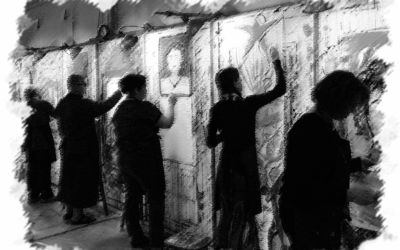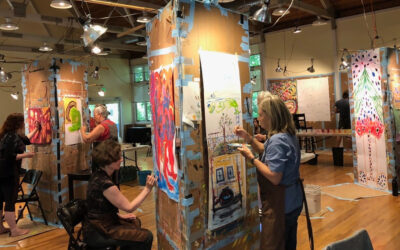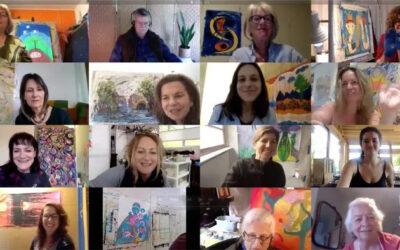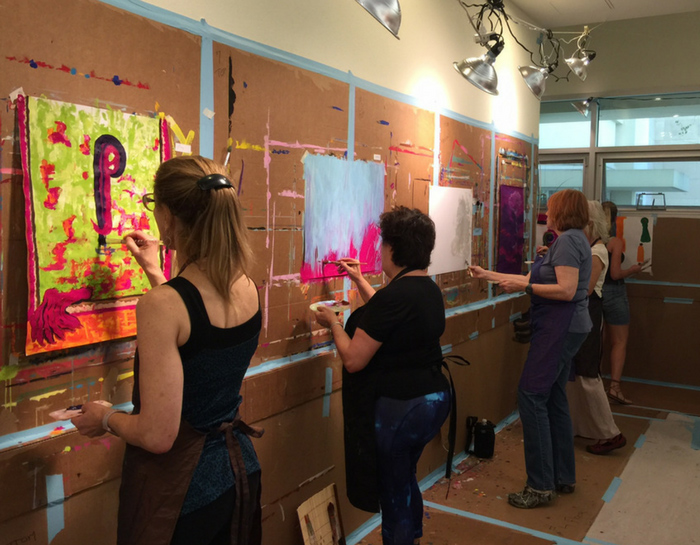
There’s a pointing mechanism in the painting process: When we attempt to control, aliveness and vitality diminish, and this reads back to us through our experience—tiredness, boredom, conflict, and judgment. The illusion of control projects the desired outcome on one side and the feared result on the other. Duality is born before our very eyes.
It’s paradoxical that real change happens only when we stop trying. In dropping our control and allowing our “not-knowing,” we suspend the doing of the-one-who-stands-outside, and in that stopping, we naturally join the flow. The flow, of course, has always been there, and we have always been in it, but with an unnecessary addition—the superimposed idea that we can direct it. It directs itself, through us—and that’s the mystery.
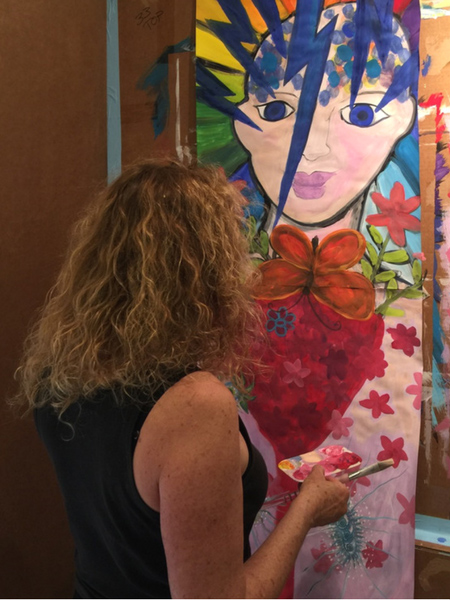
This then is the edge that we play when we work with the painting process. Over and over, we have the opportunity to dissolve the boundary, because life simply has that in mind. And the force of the personality is there to guard against its undoing at all costs, and so the dance begins. Fortunately, Time is on the side of the Timeless. The efforts of the personality wear down from the sheer exhaustion of fighting a losing battle—one in fact that the personality has been waging its whole life. And it’s really getting tired, that’s why it’s willing to stand for the insult of being blank in front of an empty canvas.
Cracks begin to appear in the carefully constructed façade. Out of nowhere a smoldering irritation descends:
“What’s the matter with me? I’m not an angry person,” the voice says. “I’ll paint something loving to get over this.”
Now the confrontation heats up. Soon the “loving image” has become distasteful, silly, repulsive and even hated. And on top of that the anger is intensifying:
“I feel like destroying this stupid painting! Something’s definitely not working here, perhaps this workshop is not for me after all. I’m a spiritual explorer, but this is ridiculous. I’m getting out of here.”
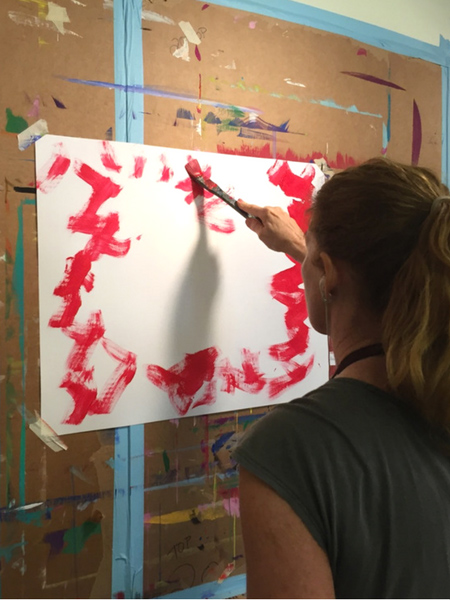
An authentic meeting with ourselves often brings up real resistance—it can be a sign we’re on the right track. No matter the depth of inner work we’ve done, the process always finds our most vulnerable spot. “So you think you’re joining the flow, eh, well then join this,” it says as if to test us. Do we see that this is our innermost voice of compassion working hard in our favor, or do we perceive it as an enemy? That becomes the essential question. One can offer very little guidance at this poignant crossroads. A kind word, a gesture of understanding or a subtle and respectful encouragement can go a long way toward making this difficult transition less frightening and lonesome, but ultimately we enter the fierce fire of transformation alone and without a guarantee.
More Information
Next week, The Painting Experience team will gather at the Still Meadow Retreat Center near Portland, Oregon for five days of professional and personal development — a time for both work and play. We’ll follow that with the Process Painting and Zen Practice weekend at Still Meadow, co-facilitated by Stewart Cubley, Rinzan Pechovnik, and Anne Pechovnik. That workshop is currently full with a waiting list, but there are lots of other programs now open for registration including the weekend of November 11-13 in Ocala, Florida, hosted by Betsy Vingle and Matt Belay. We’ll miss Betsy and Matt in Portland but hope some of you will see them down south where the extended forecast looks tempting, with clear skies and temps in the mid-eighties.
Because of all this activity, we’ll be skipping next Tuesday’s blog post, but we look forward to being back here in two weeks!

